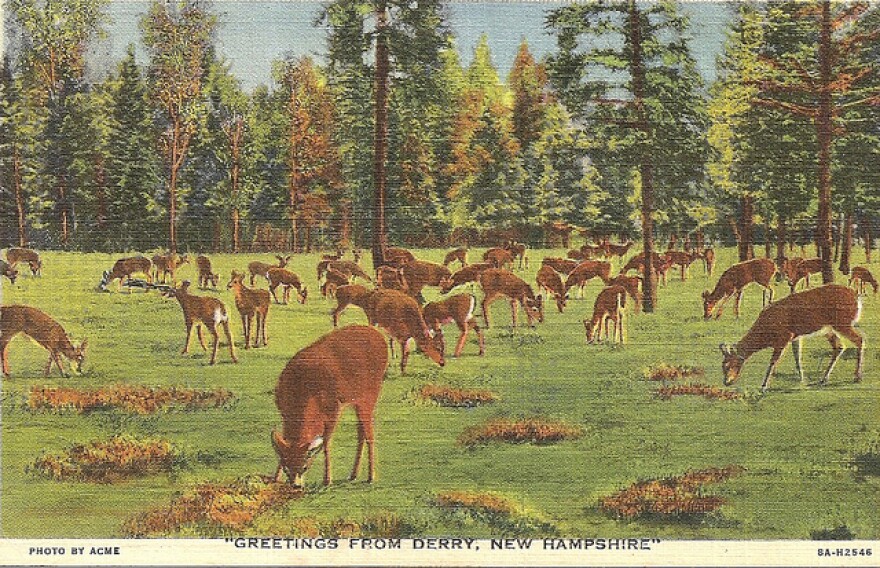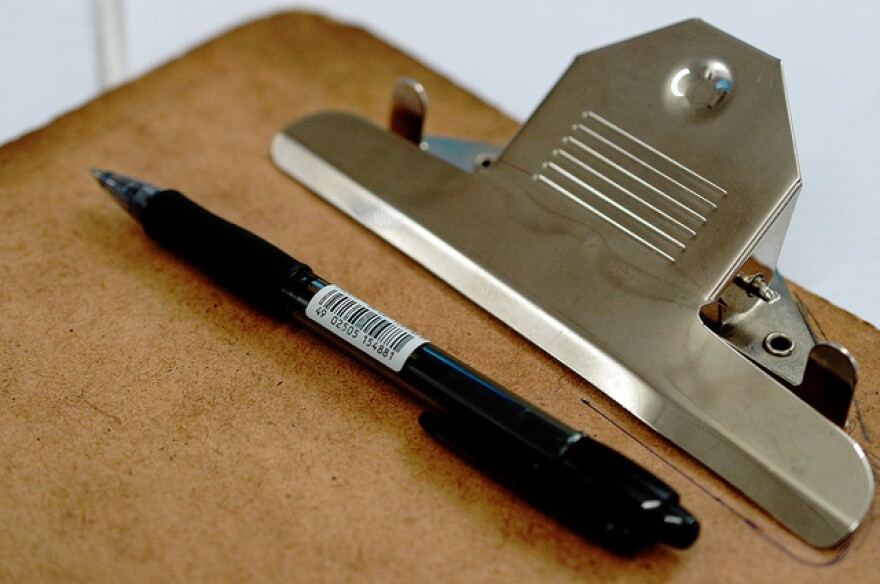How do we know how many fish there are in the sea? How many birds there are in the trees?
When biologists come to us with the estimated number of bison on the Great Plains, it’s easy to imagine where that estimate comes from, but what about the number of newts in the forest?

Fish and Game just finished up a series of presentations all around the state where they were shopping around their wild-life management plan. Basically, it’s a chance for hunters to come and see what the biologists are saying about how the populations of deer, turkey moose and bear are doing, and how many of each species they’ll be allowed to shoot. The material is dense.

Here’s a little sample from Fish and Game’s Deer Biologist, Dan Bergeron, explaining the model they use to guess at deer population:
For deer, this is the two-year running average of the adult buck-kill. That’s kind of what we use as an index to the trend in the population. That’s kind of the best index we have.
So what did that even mean? The hunters in the crowd, like Brandon O’Brien, think this is a crock.
It appears that most of their numbers come from the deer kills, is what it appears, and that’s not accurate at all. How are they saying that’s accurate? So they’re saying there’s more deer in section L and M based off of deer getting killed is the most there, but in all reality that’s the most people that hunt those areas.
So what is this inscrutable science? How do biologists know how many deer there are in the woods?
I asked Dan Bergeron, to imagine he's got a jar of jelly beans, and to guess how many jelly beans are in there. What if he had to do that for the deer population, and he's only got your deer model, how confident would he be that he'd be able to get an accurate count?
Well I’d be extremely confident, because there’s no way to count the jar of jelly-beans, I guess would be my answer.

There’s no way to count the jelly-beans and this is the central problem.
It’s akin to trying to count a couple hundred of identically sized bouncy balls, except they’re inside of a brown paper bag, and you can only reach inside with one hand, and NO peeking.
Of course, some are easier than others. For instance, loons.
John Litvaitus is professor of wildlife ecology at the University of New Hampshire and he is an expert in critter counting.
[Loons are] probably one of the few instances where you can actually go out, count the number of nesting loons on a particular lake, and have a fairly accurate idea of how that population is doing.

For most wildlife, there are either too many or they’re too hard to find to do an actual census.
Let's imagine you’re trying to estimate salamanders.
You would set up pitfall traps, which are essentially holes dug in the ground with a three or four gallon container inserted in that hole, and a drift-fence which sort of guides the salamander to that cup, they plop in, and you get a count. You can also apply then a mar to the individual animals you’ve captured, release them into the wild, and repeat this for three to four days. You get a number of animals you’ve marked recaptured, and unmarked individuals.

Before you dwell too long on the image of a four gallon bucket full of live salamanders, let’s just hit that point one more time – by releasing and recapturing animals, you get a sense of how many there are out there that you don’t see. Which of course you can use to estimate how many you have total. “Basically the tools are the math,” says Litvaitus.
The way you get that count depends on what you’re after. Salamanders are easy enough to funnel into a bucket, but for other animals, you can just find little traces of DNA they’ve left behind.
We’ve done this a lot with New England cottontail, it’s a very efficient technique for that animal because the average rabbit, believe it or not defecates 600 pellets a day, and they’re not very picky about where they leave their samples.

Of course, some animals are a little more discreet… bobcats, for example, in typical cat style, bury their leavings.
As a result the ingenuity of some biologist has been to train dogs to locate scats. And there now are commercial vendors out there that have trained dogs who will come to your study site and help you locate a sufficient sample of scats.
That’s right, poop-sniffing rental dogs, customizable by species.
You can get an estimate of animals per square mile of habitat, multiply by the habitat available statewide, and boom, population estimate.
All of this brings us back to the question that got us started going down this road… how can Fish and Game be responsibly making decisions on how many deer hunters can shoot, when their primary data point is the number of deer that hunters have shot?
Remember, some of the hunters think it’s preposterous, again Dan O'Brien.
So they’re saying that there’s more deer in sections L and M, based on deer getting killed is the most there. When in all reality, that’s the most people that hunt those areas. That’s the most developed area, a lot of people are going to hunt those areas. The further you go North, less people are traveling North to go hunting… there’s less people that live there.
But this is where the biology comes in. Fish and Game isn’t actually trying to pick a number of deer that they want the state to have, they’re just trying to manage the trajectory of the population. Do people want there to be more deer in New Hampshire, or fewer? Bergeron says it's not that cut and dried.
No one really manages based on estimated numbers, because we know there’s error in that. So to try to manage for an estimated number that’s really something that’s dangerous to do because you know there’s a lot of variation in that number.
So here it is, your senior seminar in understanding why the number of bucks shot by hunters is a good indicator of deer population trends, courtesy of John Litvaitus
The yearling male deer is physiologically the most sensitive animal in the population; they are the lowest rung on the social structure. So they are occupying or perhaps relegated to occupying the perhaps the poorest habitat in the deer neighborhood. Now if you’re sticking with me, that results in certain body-parts growing at a rate that reveals the quality of the habitat that they occupy.
This could get weedy, ok. The antler diameter is the consequence of quality of food. If a yearling deer is in fairly poor habitat, its antlers essentially will be three or four inch nubs. So what does this tell us? If there are too many deer for the habitat available, these little yearlings will scrawny, hungry, and have runty little antlers. Is the population at carrying capacity, meaning nutrient limited, or well-below carrying capacity, being nutrient rich. So if you follow that example, you’re pretty much able to be a deer biologist today. The other statistics that are used are much more simple: body weight, antler beam diameter, and there’s one last statistic, which is hunter success, number of bucks harvested per square mile. And it turns out all those parameters are highly correlated, that if you measure one, you’re pretty much measuring the other.
So there you have it. Why go through all the trouble of say, scouring the forest for deer poop, or hiring a helicopter with a thermal camera to fly over hundreds of square miles counting deer, when science has already demonstrated that if hunter numbers remains relatively constant, their success is a good measure of whether the population is rising or falling.
It’s a handy shortcut.








